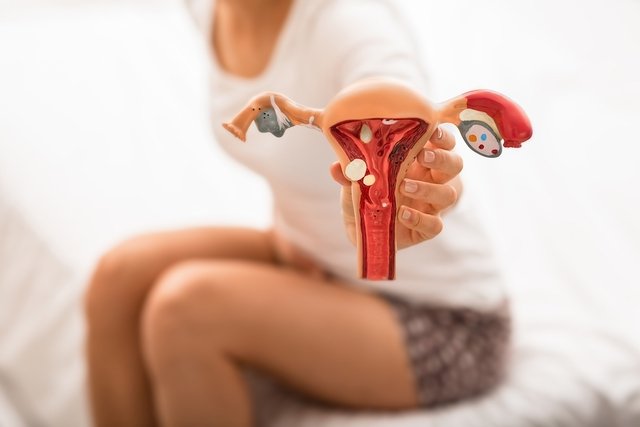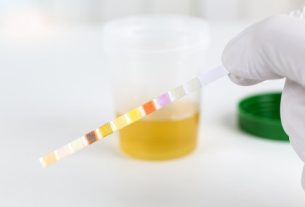The corpus luteum, also known as the yellow body, is a structure that forms shortly after the fertile period and aims to support the embryo and promote pregnancy, this is because it stimulates the production of hormones that favor the thickening of the endometrium, making -suitable for implantation of the embryo in the uterus.
The formation of the corpus luteum occurs in the last phase of the menstrual cycle, known as the luteal phase, and lasts on average 11 to 16 days, which may vary according to the woman and the regularity of the cycle. After this period, if there is no fertilization and/or implantation, the production of hormones by the corpus luteum decreases and menstruation occurs.
However, if menstruation does not occur after 16 days, it is likely that a pregnancy has occurred, and it is recommended to monitor the appearance of signs and symptoms, consult a gynecologist and perform a pregnancy test. Know the first signs and symptoms of pregnancy.

What is it for
The corpus luteum is a structure that forms in a woman’s ovary shortly after the release of oocytes during ovulation and whose main function is to promote fertilization and the implantation of the fertilized embryo in the uterus, resulting in pregnancy.
After ovulation, the corpus luteum continues to develop due to hormonal stimuli, mainly from the hormones LH and FSH, and releases estrogen and progesterone, mainly in large quantities, which is the hormone responsible for maintaining the conditions of the endometrium for a possible pregnancy.
The luteal phase lasts an average of 11 to 16 days and if pregnancy does not occur, the corpus luteum ends up degenerating and decreasing in size, giving rise to the hemorrhagic body and subsequently to scar tissue called the white body. With the degeneration of the corpus luteum, the production of estrogen and progesterone decreases, giving rise to menstruation and the shedding of the endometrial lining. See more details about how the menstrual cycle works.
Relationship between corpus luteum and pregnancy
If a pregnancy occurs, the cells that will give rise to the embryo begin to release a hormone called human chorionic gonadotropin, hCG, which is the hormone detected in urine or blood when pregnancy tests are performed.
The hCG hormone exerts a similar action to LH and will stimulate the corpus luteum to develop, preventing it from degenerating and stimulating it to release estrogen and progesterone, which are very important hormones for maintaining the conditions of the endometrium.
Around the 7th week of pregnancy, it is the placenta that begins to produce progesterone and estrogens, gradually replacing the function of the corpus luteum and causing it to degenerate around the 12th week of pregnancy.

Sign up for our newsletter and stay up to date with exclusive news
that can transform your routine!
Warning: Undefined array key "title" in /home/storelat/public_html/wp-content/plugins/link-whisper-premium/templates/frontend/related-posts.php on line 12
Warning: Undefined array key "title_tag" in /home/storelat/public_html/wp-content/plugins/link-whisper-premium/templates/frontend/related-posts.php on line 13



